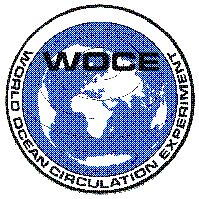Links
Donate
Donate to PSMSL
WOCE Centres

The 1990s saw major efforts to collect higher frequency (typically hourly) sea level data in order to provide an 'in-situ' World Ocean Circulation Experiment (WOCE) dataset, primarily for comparison to and validation of sea level data obtained from satellite radar altimetry. The collection of sites designated the 'WOCE tide gauge network' was comprised mostly of GLOSS island stations and pairs of gauges across straits and totalled about 100 stations.
There were two WOCE Sea Level Centres (WSLC's):
(1) the first was at the University of Hawaii Sea Level Center. This was the WOCE `fast centre' and was charged with the provision of as fully quality controlled and as complete as possible a WOCE sea level dataset within a timescale similar to that of altimeter data availability (i.e. several months). From 1999, the UHSLC was re-designated as the GLOSS 'fast centre'.
(2) the second was at the British Oceanographic Data Centre at the Proudman Oceanographic Laboratory, Bidston Observatory, (now the National Oceanography Centre at Liverpool) alongside the Permanent Service for Mean Sea Level (PSMSL). This was the WOCE `delayed mode centre' and was charged with the provision of a fully quality controlled and complete WOCE sea level dataset within 12-18 months of data availability.
For further information on data sets collected during WOCE, see the above web pages.
The WOCE programme ended formally at the end of 2002, at which time the various WOCE functions metmorphosed under GLOSS and CLIVAR designations.





